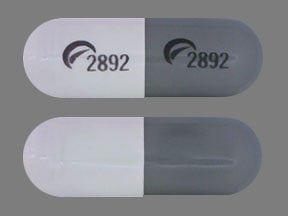
Duloxetine Coupons & Savings Card – Discount Prices from $5.97
Generic for: Cymbalta, Drizalma sprinkle
My prescription
Edit
60MG, Duloxetine (30 Capsule Delayed Release Particles)
Select pharmacy

CVS
$20.05
COUPON PRICE
Walmart
$5.97
COUPON PRICE
Walgreens
$11.90
COUPON PRICE
Albertsons
$14.07
COUPON PRICEDuloxetine savings card
Show this card to your pharmacist
Walmart
$5.97
BIN
ID
PCN
GRP
019876
LH56B02118
CHIPPO
LHX
Powered by
More prescriptions for musculoskeletal conditions
More prescriptions for musculoskeletal conditions
Price history for Drizalma Sprinkle (brand) & Duloxetine (generic)
30 Capsule Delayed Release Particles, 60MG
Average retail price for Drizalma Sprinkle
Average retail price for Duloxetine
Average SaveHealth price for Duloxetine
Our price history data is based on aggregated prescription data collected from participating pharmacies in America. Our prescription data updates daily to reflect the latest price changes. If you notice a missing data point, it means there wasn't sufficient data available to generate a monetary value for that date.
We analyzed Duloxetine prices for (60MG, 30 Capsule Delayed Release Particles) over the last 12 months. The average retail price was $39.53, while the average price using the SaveHealth discount card was $20.84. That's a savings of approximately 47.28% when using our Duloxetine coupon.
Compared to the generic version, Drizalma Sprinkle had an average price of $262.85 over the same time period. With the SaveHealth savings card, Duloxetine is 92.07% cheaper on average than Drizalma Sprinkle.
*Retail prices are based on pharmacy claims data, and may not be accurate when we don't have enough claims.
Duloxetine dosage forms
Dosage Quantity Price from Per unit 20MG 30 Capsule Delayed Release Particleses $5.61 $0.19 20MG 60 Capsule Delayed Release Particleses $8.72 $0.14 20MG 90 Capsule Delayed Release Particleses $18.33 $0.20 20MG 120 Capsule Delayed Release Particleses $21.45 $0.18 20MG 180 Capsule Delayed Release Particleses $33.72 $0.19 30MG 30 Capsule Delayed Release Particleses $5.38 $0.18 30MG 60 Capsule Delayed Release Particleses $8.26 $0.14 30MG 90 Capsule Delayed Release Particleses $17.64 $0.20 30MG 180 Capsule Delayed Release Particleses $32.69 $0.18 30MG 270 Capsule Delayed Release Particleses $37.42 $0.14
| Dosage | Quantity | Price from | Per unit |
|---|---|---|---|
| 20MG | 30 Capsule Delayed Release Particleses | $5.61 | $0.19 |
| 20MG | 60 Capsule Delayed Release Particleses | $8.72 | $0.14 |
| 20MG | 90 Capsule Delayed Release Particleses | $18.33 | $0.20 |
| 20MG | 120 Capsule Delayed Release Particleses | $21.45 | $0.18 |
| 20MG | 180 Capsule Delayed Release Particleses | $33.72 | $0.19 |
| 30MG | 30 Capsule Delayed Release Particleses | $5.38 | $0.18 |
| 30MG | 60 Capsule Delayed Release Particleses | $8.26 | $0.14 |
| 30MG | 90 Capsule Delayed Release Particleses | $17.64 | $0.20 |
| 30MG | 180 Capsule Delayed Release Particleses | $32.69 | $0.18 |
| 30MG | 270 Capsule Delayed Release Particleses | $37.42 | $0.14 |
| 40MG | 7 Capsule Delayed Release Particleses | $10.92 | $1.56 |
| 40MG | 30 Capsule Delayed Release Particleses | $31.58 | $1.05 |
| 40MG | 60 Capsule Delayed Release Particleses | $44.87 | $0.75 |
| 40MG | 90 Capsule Delayed Release Particleses | $66.15 | $0.73 |
| 40MG | 180 Capsule Delayed Release Particleses | $106.00 | $0.59 |
| 60MG | 30 Capsule Delayed Release Particleses | $5.97 | $0.20 |
| 60MG | 7 Capsule Delayed Release Particleses | $3.31 | $0.47 |
| 60MG | 60 Capsule Delayed Release Particleses | $9.45 | $0.16 |
| 60MG | 90 Capsule Delayed Release Particleses | $19.42 | $0.22 |
| 60MG | 180 Capsule Delayed Release Particleses | $35.37 | $0.20 |
Duloxetine Warnings
Antidepressant medications, such as Duloxetine (Cymbalta), are effective for treating depression and various mental or mood disorders. While these medications can prevent suicidal thoughts and provide significant benefits, they also carry potential risks. Below is important safety and warning information to consider:
Risk of Suicidal Thoughts and Behavior: Especially in individuals 24 years or younger and those with a history of depression or mental health conditions, Duloxetine may increase the risk of worsening depression or suicidal thoughts. Monitor for any new or worsening symptoms, especially when initiating treatment or modifying dosage. Immediate consultation with a healthcare professional (HCP) is advised if such changes occur.
Liver Damage: Rare but serious liver issues have been reported. Symptoms like stomach pain, nausea, vomiting, leg swelling, and jaundice require urgent medical attention. Individuals with a history of liver problems or those consuming alcohol are at higher risk.
Blood Pressure Changes and Fall Risk: Regular blood pressure monitoring is essential as Duloxetine can cause fluctuations. The risk is heightened in older adults, those with balance issues, or individuals taking more than 60 mg daily or other blood pressure-lowering drugs.
Serotonin Syndrome: This potentially life-threatening condition occurs with excessive serotonin in the brain, especially when combined with other serotonergic drugs. Seek immediate medical help if symptoms like a fast heart rate, sweating, muscle stiffness, high fever, or confusion arise.
Increased Bleeding Risk: Duloxetine may elevate bleeding risk, particularly if combined with aspirin, NSAIDs, or blood thinners. Be alert for unexplained bruising, black stools, pink/red urine, or unusual nose/gum bleeding, and inform your HCP promptly.
Severe Skin Reactions: Rare severe skin reactions can occur. Urgent medical attention is necessary if painful blisters, peeling rash, or sores develop.
Withdrawal Symptoms: Abrupt discontinuation can trigger withdrawal effects such as nausea, anxiety, confusion, trouble sleeping, and dizziness. Consult your HCP for a gradual tapering plan.
Mania: In individuals with a personal or family history of bipolar disorder, Duloxetine may provoke manic episodes. Report any unusual behavioral changes to your HCP immediately.
Low Sodium Levels: This condition may develop, particularly in older adults or those with SIADH, taking diuretics, or experiencing dehydration. Symptoms like headaches, confusion, or balance issues warrant contacting your HCP.
Sexual Problems: Some adults may experience sexual dysfunction, including erectile issues and decreased libido. Discuss any distressing sexual side effects with your HCP.
Contraindications: Duloxetine should not be used if you are currently taking or have recently taken a monoamine oxidase inhibitor (MAOI) within the last 14 days, or if undergoing treatment with linezolid (Zyvox) or methylene blue. Always consult your healthcare provider before starting this medication if these conditions apply to you.
Duloxetine Side Effects
Common side effects:
- nausea
- dry mouth
- constipation
- loss of appetite
- tiredness
- drowsiness
- dizziness
- increased sweating
- headaches
- trouble sleeping
- diarrhea
- stomach pain
Less common but important to monitor:
- blurry vision
- abnormal heartbeat
- tremors
- vomiting
- low sex drive
- yawning
- changes in weight
Serious side effects:
- suicidal thoughts or behaviors
- significant liver damage
- symptoms of serotonin syndrome
- severe bleeding or bruising
- low sodium levels
- severe skin reactions
- seizures
- confusion
- hallucinations
- unexplained fever
- severe dizziness
- fast heartbeat
- very serious allergic reaction
- rash
- itching/swelling (especially of the face, tongue, or throat)
- trouble breathing
- skin blisters
- mouth sores
Duloxetine Interactions
Interactions with high risk of serious adverse effects and should be avoided:
- MAO Inhibitors (isocarboxazid, Linezolid, methylene blue, moclobemide, phenelzine, procarbazine, Rasagiline, safinamide, Selegiline, Tranylcypromine)
- Thioridazine
- Viloxazine
Interactions with moderate risk that may require dose adjustment, closer monitoring, or timing changes:
- Clopidogrel
- NSAIDs (Ibuprofen, Naproxen)
- Blood thinners (Dabigatran, Warfarin)
- Aspirin
- Serotonin-increasing drugs (certain antidepressants, St. John's wort, Tryptophan)
- Cimetidine
- Certain quinolone antibiotics (Ciprofloxacin, enoxacin)
- Antiarrhythmic drugs (Propafenone, Flecainide, quinidine)
- Antipsychotics (including thioridazine)
- Tricyclic antidepressants (Desipramine, imipramine)
Interactions with low risk that usually do not require a change in therapy:
- Alcohol
- Cannabis
- Antihistamines (Cetirizine, diphenhydramine)
- Drugs for sleep or anxiety (Alprazolam, Diazepam, Zolpidem)
- Muscle relaxants
- Opioid pain relievers (codeine)
